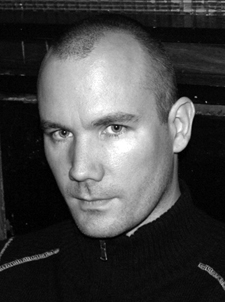Printed in the Spring 2016 issue of Quest magazine.
Citation: Lizzio, Kenneth P., "Mubarak Sahib: A Firsthand Portrait of an Afghani Sufi Master" Quest 104.2 (Spring 2016): pg. 75-79
By Kenneth P. Lizzio
Afghanistan has long been known as the redoubt of mysterious and awe-inspiring Sufi schools. Today, when the nation has been subjected to decades of warfare, one could wonder what may have happened to these schools and to the masters who taught them.
In this account, Kenneth P. Lizzio describes one such man, Pir Saif ur-Rahman, known as Mubarak Sahib (“blessed master”) to his disciples. (Pir means spiritual guide.) Head of the Naqshbandi order of Sufis, he was forced by persecution to flee to Pakistan in 1978. He never returned to his homeland and died in 2010.
Lizzio lived and studied in Mubarak Sahib’s school for several months in 1994–95. This article is excerpted from his book Embattled Saints: My Year with the Sufis of Afghanistan, published in 2014 by Quest Books and reviewed in Quest magazine, fall 2014. Reprinted with permission. —R.S.
 Who was Mubarak Sahib?
Who was Mubarak Sahib?
As I think back, the answer to this question is not about the kind of individual he was. By this I mean the pir’s personality held no special attraction for me or, I believe, for any of his other close disciples. It is a common fallacy that disciples view the spiritual master with a kind of childlike fascination. In the khanaqah (lodge), we did not spend our idle time talking about him in rapt wonder. Nor did we invest his every act with portentous magical significance. For his part, he did not talk about himself and regarded questions about his personal life and his upbringing as frivolous, unless, of course, there was a moral or historical lesson to be derived from it.
In fact, many disciples were quite objective in their assessment of the pir. One said he was a “good cleric, though not exceptional” and not a particularly good writer. He certainly did not publish works of distinguished literary merit, as had Sirhindi, Rumi, and many other Islamic mystics. There were even times when he could be the simple, rustic Afghan. Like many Afghans, he possessed an almost magical regard for Western medicines. Medication was a panacea to be taken willy-nilly for any ailment, or for no ailment whatever as a preventive regime. The pir was not immune to this cultural idiosyncrasy, of which his European doctor was constantly trying to disabuse him. He could be politically naïve too, a common failing of those who traffic in spiritual matters.
That the pir had a personality there can be no doubt, but in way that a person has skin: it was incidental to the being that resided within. The “being within” abided in a state of unitive consciousness. It was probably not a state he lived in continuously, a consequence of both phenomenal existence and the mysterious working of grace. The pir dedicated his life to showing others that such consciousness resides in each individual willing to pursue the Naqshbandi path. It is in this sense that he was extraordinary. He showed, as do all spiritual masters, what it meant to be fully human.
To be fully human meant being fully Muslim. At times the pir was the Old Testament lawgiver, the righteous exemplar of the shari‘a, the body of rules guiding the life of a Muslim. To live in imitation of the prophetic sunna (the life and example of Muhammad) was, for him, the alpha of life. It informed his waking and sleeping activities to such a degree that there was hardly another person existing apart from it. He lived in imitatio Muhammadi.
He never forgot the slightest thing said in passing or jest, to be called upon when he needed to make a point. In time, I learned that he said very little not intended in some way to edify or instruct in the sunna. He was an indefatigable ombudsman, chastising disciples for carelessness in their dress and length of turban or beard. He never failed to scrutinize and correct the appearance or comportment of everyone who came within his orbit. Our pants were too long, our turbans too small, our stays too brief. Once when the pir was introduced to some Iraqi students from Lahore, it was near midnight. While the rest of us were tired and anxious for bed, the pir began to lecture them on the proper dress for a Muslim, raising his right leg aloft to show the proper length of his pants. In one sense, he was instructing them individually. In quite another, I suspected even so small and insignificant a gesture was intended for all of Iraq. Another time he ordered a man out of the mosque who had entered improperly, leading with his left foot instead of his right.
One time an old Afghan man, impoverished and decrepit, came into the mosque during suhbat (the practice of keeping company with a Sufi master). He slowly crawled on his belly like a reptile toward the pir, sobbing and moaning. It was a heartbreaking display, and I imagined the man must have just suffered a great loss in the war. I expected the pir to take pity on the wretched figure before him. Instead he chided him for his abject behavior. Later, I was told that this kind of behavior—pir worship—was forbidden by the sunna. It was also the kind of thing that the pir’s critics falsely accused him of encouraging in his followers.
Another time, a disciple came to ask him to make an amulet to improve the disciple’s relationship with his wife. Whereas the pir freely made them for persons who were ill, in this instance he refused, for such an amulet, according to the sunna, was viewed as meddling in one’s personal affairs.
His daily routine was not just dictated by the sunna; it was the sunna personified. Each day the pir woke before dawn, performed ablutions, and recited twelve supererogatory prayers known as tahajjud. He also performed two prayers after every ablution. He then recited an Arabic prayer formula, “I ask forgiveness from God,” 626 times. If he missed this prayer, he would make it up sometime during the day.
Then, with his copper-plated staff in hand, he crossed the narrow drive that separated his house from the mosque to lead the morning prayer. He was always impeccably attired in an immaculate white turban and a colorful khirqa (cloak). At this hour he was usually solemn and, except to issue instructions sotto voce to his attendants, he said nothing. Upon entering he would glance at those in the mosque, seemingly making a mental photograph of everyone in attendance. He took his place in front of the mihrab, or prayer niche, and led us in prayer. After prayer he recited suras from the Qur’an, which he required his disciples to do as well.
After the Sura Yasin was read by the qari (reciter), a large white chair was drawn from one side and placed directly in front of the mihrab for one to two hours of exercises. Until late in his life, the pir always sat on the floor with his disciples, but with increasing age and weight, he had begun to use a chair most of the time. He occasionally struggled to his feet when rising, but for the most part remained remarkably agile for a man in his seventies.
Dhikr, sometimes spelled zikr, is a Sufi practice of repeating the names of God. During dhikr sessions, the pir was a tireless orchestrator, directing disciples to form a more even circle in front of him, correcting their posture, or calling for adjustment of the lights. On weekends when many more disciples were present, he often ate breakfast in the mosque so as to extend the time for disciples to be in his company for suhbat. If he returned to his house to eat, as he did during the week, he conducted exercises there with his female disciples, who were not permitted in the mosque. When the sun rose, he performed four more prayers.
By late morning, if not at home with visitors or family, the pir could usually be found in one of the langars, or common dining areas, again conducting exercises. The purpose of these informal gatherings was not to socialize; only rarely did the conversation take the form of idle chitchat. Occasionally, a visitor came to request a special dispensation from the pir, such as a prayer or counsel. The pir always regarded these sessions as opportunities for the disciple to further his spiritual advancement. Once, when I decided to forgo the session and go for a walk, he upbraided me sharply for missing the session.
Despite the purposeful nature of suhbat, the pir was relaxed, talking animatedly about a variety of issues — trouble he was having with the fundamentalists, how he was betrayed by a disciple, doctrinal points of hadith (sayings of the Prophet) or fiqh (jurisprudence) — all the while interjecting his talk with quotes from the Qur’an, Sirhindi’s letters, or Rumi’s Mathnavi, which was a kind of Persian Qur’an for him. Sometimes he would send an assistant to fetch a text from which he wished to read. His knowledge of the texts was prodigious, and he always seemed to know precisely the page he wished to cite. One time a disciple was reading from the voluminous Mathnavi while the pir was talking to us. Whenever the disciple misread a word — which was embarrassingly often — the pir corrected the disciple from the side of his mouth, in such a way as not to break stride in his conversation. We were all astonished.
Around lunchtime, the pir returned to his house, where he read three suras from the Qur’an. Then he might spend time with his large family in suhbat with the women. After a short rest, he prepared for the noon prayer, after which he recited more suras. Noon prayer was usually followed by an intense one- to two-hour dhikr session. As with the morning suhbat, the pir was constantly at work during dhikr, directing someone to move closer to him, or others to spread out and make room for late arrivals, giving bay‘a, an oath of allegiance administered to initiates, or chiding those looking around instead of focusing on him or one of the khalifas. (A khalifa, or successor, is one whom a Sufi master has designated to teach.) Usually these dhikr sessions were so long that they stretched into the afternoon prayer. He would close a session by reciting, along with the advanced disciples, the Naqshbandi prayers known as khatm-i khwajagan as well as individual prayers to Ahmad Sirhindi, Bahauddin Naqshband, and ‘Abd al-Qadir al-Jilani. At the conclusion of dhikr, he returned to his house, where he performed six more prayers and then recited two more suras from the Qur’an.
He returned to the mosque for the evening prayer. Afterward, he called for another session of dhikr. On Thursday night, he ate dinner in the mosque with disciples so that those visiting for the weekend could get as much time as possible in suhbat with him. Dinner was followed by the night prayer. One never knew at what time the night prayer would take place; we were always kept in a state of vigilance until the alert was sounded that he was heading for the mosque, the call “Salat!” (prayer) reverberating throughout the khanaqah. Sometimes the pir would wait until midnight to lead the prayer. After prayer he recited still more suras. Before retiring for the night, he recited the Naqshbandi prayers of contemplation. Three times each year, including the twenty-seventh day of Ramadan, he prayed all night. During Ramadan, he recited the entire Qur’an.
I never saw the pir even once do something that contradicted the teaching or appeared to stem from a personal whim or selfish mood. Even though each disciple was at a different stage of development, the pir’s treatment of others was consistently measured by the extent to which they lived up to the teachings. Perhaps for this reason, he treated the more advanced practitioners more harshly than beginners. Once one of his most senior khalifas was giving the Friday sermon. Mubarak Sahib was in his house. When he came out to lead the prayer, the pir excoriated the khalifa in front of the congregation for thirty minutes for misquoting the Qur’an. He had been listening intently to the loudspeaker the entire time. His own angry tirade was broadcast over the loudspeakers too. The khalifa was deeply shamed. There was never any special treatment at the khanaqah or favored treatment for advanced disciples. What Mubarak Sahib said to one, he said to all.
One Friday afternoon, for no particular reason, there was almost no one present for prayer. I later remarked to Ihsan, a Swiss doctor who was one of the khalifas, how disheartening it was that more Muslims did not come to the khanaqah.
“It doesn’t matter,” he said. “Whether there is one disciple standing behind him or one thousand, Mubarak Sahib will still come each day to the mosque and lead the prayer.”
During my time with the pir, I did not fully realize what an extraordinary man he was, paradoxically because he was so accessible to me. He was a husband, a father, a farm manager, a community head, an imam and religious counselor, and a spiritual master. A refugee saint and warrior, he had been driven from his country and witnessed the death or dismemberment of thousands of his disciples. In fleeing to Pakistan, he found little relief. Indeed his problems only increased as he ran head on into militant fundamentalists. Yet despite all these hardships, he remained undaunted. He fulfilled his office with an energy that belied his age and a host of ailments that included rheumatism, arthritis, high blood pressure, gastroenteritis, peptic ulcer, sciatica, and migraine headaches.
So much was the pir at the disposal of his disciples, male and female, that it left little time for his family. His youngest children, anxious to see more of their father, often wandered into the mosque during suhbat. By then, the children were already inured to the disciples’ bizarre behavior. Standing behind his chair, they would playfully touch the tail of his turban while disciples shook and groaned on the floor in front of him. The pir never displayed any affection or attention to his children at these times, his spiritual work with disciples being uppermost in his mind.
It was not hard to see how the heavy demands of his office and the privileged life his children enjoyed had corrupted some of his sons. The pir, fully aware of their shortcomings, did not hesitate to berate them in front of the congregation as “worthless to me.” This indictment was made as much in his capacity as father as in that of a religious leader for their failure to live up to the shari‘a. Despite his dissatisfaction with them, he refused to disown them. “What can I do?” he once said, “They are my family.” Given his exacting standards, however, their failings must have been a sore point in his life.
Mubarak Sahib owned a vehicle and a fax machine, but he placed no real value on them or on the larger intellectual and scientific world from which they issued. If these modern conveniences had been taken away, he would have felt not the slightest loss. I am certain of that. He was simply not interested in what the West had to offer — not its scientific achievements, and certainly not its intellectual and social achievements.
For the pir, Islam was a complete world, a total way of life. It offered a social and political system, legal injunctions, and intellectual and moral guidelines for a community of believers linked to one another and, ultimately, to God. The path to this life was not to be found in modern progress or scientific discovery. The path was laid down by the Prophet in the seventh century. It was thus to the past that Mubarak Sahib looked, historically, morally, intellectually, and most important, spiritually. The grace he received and transmitted was a living confirmation of the essential rightness of his chosen path. He lived so fully the sunna of the Prophet, within and without, that in reality there was only the living embodiment of the teaching. As someone once described his Japanese Zen teacher, the pir was seamless.
A few years before his death in 2010, the pir went to a village in Afghanistan to seek treatment for an ailment. When villagers heard that he was in town, they flocked to his house in the hope of sitting with him in suhbat. Even though he was sick, he sat with his disciples into the wee hours of the morning. His life was one of constant service to his disciples, whom he called “my moral children.”
The title Mubarak Sahib was not a mere honorific given to a religious authority but an affirmation of a being who bestowed a real, tangible blessing power on all who approached him sincerely and availed themselves of it. He was an impeccable exemplar of his religion and an inexhaustible source of baraka (spiritual power), and disciples said that when he passed, there would be no Naqshbandi pir alive capable of matching his exacting moral standards or the power of his baraka.
It seems paradoxical to revere a man for the fastidiousness with which he imitated a religious ideal and for his inner spiritual realization. For these imply that the person transcended individual existence as the rest of us live it. But that has always been the unspoken, the unutterable, message of the Sufis.
As the tariqa (Sufi path) was to the shari‘a, so was there an another side to the stern lawgiver: the mystical ecstatic. Early on, when I complained to a khalifa that the pir was constantly criticizing me, he said, “Don’t you understand, he loves you?” Indeed, if I was absent from the khanaqah more than two weeks the pir would, upon seeing me again, inquire as to my health and why I was not coming more often; this despite the fact that in the intervening period he might have seen more than a thousand individuals and dealt with as many problems.
He was so attentive to each disciple that each felt that he was the object of his special attention. During sessions, he intuitively knew when I wanted to sit up front with the khalifas, even when there were dozens of other disciples in the mosque clamoring for the same attention. At these times, he would beckon me to the front with a warm smile. If he was demanding of his disciples, it is because he worked relentlessly to close the gap between where we were and where we needed to be in order to participate in the ecstatic life of the spirit.
When the pir learned that my departure from Pakistan was imminent, he ordered his closest pirs to sit with me in tawwajuh so that I might know his spiritual universe and share my realization with others. (Tawwajuh is a practice whereby a Sufi concentrates upon a disciple as a means of transferring spiritual grace.) He never showed disappointment or disapproval of me, even long after I had lost faith in myself to experience dhikr. He never asked me for a single thing, even though he gave so much of himself. All he asked was that I follow the Naqshbandi path. I know that he wanted me to be his khalifa in America, a task I was unfit to assume, but a goal for which he never lost hope. Perhaps in some small way this book is a kind of fulfillment of that wish.
Of course, I cannot claim to know the innermost state of any man, least of all a mystic like Mubarak Sahib. There were things he did that were well beyond my ken. Several times individuals — nondisciples — showed up at the khanaqah in a state of what could only be described as possession. Foaming at the mouth, fitful, shaking, they seemed beyond help. After examining them, the pir usually pronounced them to be suffering from physical or psychological afflictions and had them taken to the hospital for treatment.
One time, however, a man came to the pir whom Ihsan insisted was suffering from epilepsy. With wild, feverish eyes and spittle lining the edges of his mouth, the man made bestial whoops like a wounded animal. This time the pir’s diagnosis was some sort of psychic possession, and he proceeded to treat him. When the man departed the next day, he was completely healed of his horrific condition and walked off placidly as if nothing had happened. “You think he was suffering from epilepsy or some other disease, but he was possessed by jinn [spirits],” the pir said to me and Ihsan. “But you people [meaning Westerners] don’t believe in such things.” The pir had turned the tables on us, and benighted belief was our error, not his.
There is an entire body of esoteric sciences in Sufism that I was told existed, but which I never studied. The pir sacrificed black chickens for supplicants. He created lockets with magic charms and talismans for the weak and the needy, some of whom were disciples but most of whom were simply desperate victims of the war, poverty being their plight as refugees. Whether he was simply trying to give these people moral support or there was more than met the eye, I could not say.
In the khanaqah disciples never talked about the pir’s ability to perform miracles. Such talk was regarded as sensationalist and as a distraction from spiritual work on ourselves. For the most part, he did not perform miracles. Sirhindi taught that miracles were not necessary for a saint and advised Sufis to conceal their activities in this regard. In the khanaqah, the one exception to this prohibition was stories concerning the strange workings of the pir’s baraka, stories that were not myth — the usual anthropological interpretation — but a reality confirmed every day in the khanaqah.
One such incident occurred near the end of my stay. It was the afternoon prayer and I was sitting at the back of the mosque. The mosque was full. I was despondent that after ten months as a Naqshbandi I had made no progress. Unable to control my sense of failure, I began weeping silently. I was seated directly behind someone, so that the pir — unaccustomed to looking at the congregation during prayer anyway — would not notice me if he were to turn around. As soon as the prayer ended, he immediately turned around and, staring blankly into the crowd, began calling for me.
“Ahmad, Ahmad, where are you?” he asked. “Are you all right?” He was looking around and still had not found me in the congregation.
At that point, my face dry, I held up my arm. “Baleh, Mubarak sahib, khailikhub-am, merci [Yes, I am fine, thank you],” I said.
But I remained distraught. After so many months of immersing myself in the Naqshbandis’ rigorous spiritual exercises, I knew I would soon be returning to the United States without ever having tasted that intoxicating wine I had so desperately sought. In a way I had prepared for years for my spiritual adventure, intensively studying Persian and the history and culture of the region. But the real learning, the spiritual, had eluded me.
Was I too much an academic, too analytical, too critical, too intellectual? Did I erect unconscious barriers to the pir’s teaching because it required me to live in the Khyber, which I abhorred?
The great Sufis have said that the first true step in the spiritual path is ikhlas, sincerity. This means that one really begins the spiritual journey when and only when one realizes that the demands of the ego for fulfillment through money, career, and other forms of worldly gratification are a fruitless quest, a fool’s game. Coming to the end of himself is what made the conversion of Ismael, a German disciple, to Islam so unqualified, so complete. Only then can one shed the old self and begin to move toward the divine mystery. On the other hand, did not the Naqshbandis offer a taste of the spirit for people just like me as a way of getting us over our lingering egoic attachments? Perhaps I just needed just a bit more time, like Ihsan.
The answers were not clear then, or even now. Indeed, several years later, a deep sense of disappointment still pervades my memory of that special time at the khanaqah. I lived in a spiritual community that needed no intellectual defense, no justification to the world of modern intellectual skeptics or that of backward religious fanatics. We knew who Mubarak Sahib was and what he embodied: the highest human endeavor — the pursuit of the Divine. And we all sought in our own way and in our time to participate in that life.
On my last day in the mosque, I informed the pir of my imminent departure. He suddenly redoubled his efforts to awaken my dhikr. First he drew me close to him, performing dhikr exclusively with me. Then he instructed Habib ur-Rahman, a pir who was a disciple of his, to work on me intensively. Taking me to a corner of the mosque, Habib fixed a wild gaze on my heart region, mustering what looked like his total spiritual force to awaken me once and for all. After several minutes, a pain arose in my heart; after a few more minutes it had become so acute that it felt as though a knife were being thrust into it. The pain was so great I had to ask him to stop.
It was our last time together.
Kenneth P. Lizzio is a specialist in Islam with a Ph.D. in Near Eastern studies. He has taught anthropology at Winthrop and James Madison universities. He has also served as a democracy officer for the U.S. Agency for International Development in Rwanda, Indonesia, Guyana, and Macedonia and has held other posts in the Middle East and Africa. He is presently working on a book about Morocco.
 It’s always exciting when local news goes national.
It’s always exciting when local news goes national.

 The goal of Sufism is to make us into real dervishes, real Muslims, and real human beings. These three are essentially the same. Our goal is to come closer to God, and that is the same in all religions and all mysticism. The major difference between our practice and the practices of other spiritual traditions is we follow the shariat, the rules and the ways of worship of Islam.
The goal of Sufism is to make us into real dervishes, real Muslims, and real human beings. These three are essentially the same. Our goal is to come closer to God, and that is the same in all religions and all mysticism. The major difference between our practice and the practices of other spiritual traditions is we follow the shariat, the rules and the ways of worship of Islam. Who was Mubarak Sahib?
Who was Mubarak Sahib? There are two main denominations in Islam, Sunni and Shi’a. The division happened soon after the death of the Prophet. Shi’as see Ali, cousin of Muhammad, as his successor; Sunnis believe that it was Abu-Bakr, the Prophet’s father-in-law. After many wars and persecutions over the centuries, Sunni has become the largest denomination. Shi’a is practiced mostly in Iran, Azerbaijan, Iraq, India, and Pakistan, and accounts for about 10 percent of all of the Muslims in the world. Over the centuries the Shi’as established different traditions, holidays, and rules that set them even further apart from the Sunnis. The two sides are in constant conflict with each other, sometimes resulting in violence or war.
There are two main denominations in Islam, Sunni and Shi’a. The division happened soon after the death of the Prophet. Shi’as see Ali, cousin of Muhammad, as his successor; Sunnis believe that it was Abu-Bakr, the Prophet’s father-in-law. After many wars and persecutions over the centuries, Sunni has become the largest denomination. Shi’a is practiced mostly in Iran, Azerbaijan, Iraq, India, and Pakistan, and accounts for about 10 percent of all of the Muslims in the world. Over the centuries the Shi’as established different traditions, holidays, and rules that set them even further apart from the Sunnis. The two sides are in constant conflict with each other, sometimes resulting in violence or war. Although still a relatively unknown figure in both the West and in contemporary Islamic thought, the French esotericist René Guénon (1886–1951) “has exercised profound influence in certain significant circles in a number of Islamic countries,” says Seyyed Hossein Nasr, an Iranian-born scholar of Islam, “and [Guénon’s] impact is very much on the rise” (Nasr, 363). Members of these circles either read Guénon in the original French or in translation, or have learned about his ideas through the writings of other major Traditionalist authors as well as a number of “Muslim-born” thinkers.
Although still a relatively unknown figure in both the West and in contemporary Islamic thought, the French esotericist René Guénon (1886–1951) “has exercised profound influence in certain significant circles in a number of Islamic countries,” says Seyyed Hossein Nasr, an Iranian-born scholar of Islam, “and [Guénon’s] impact is very much on the rise” (Nasr, 363). Members of these circles either read Guénon in the original French or in translation, or have learned about his ideas through the writings of other major Traditionalist authors as well as a number of “Muslim-born” thinkers.